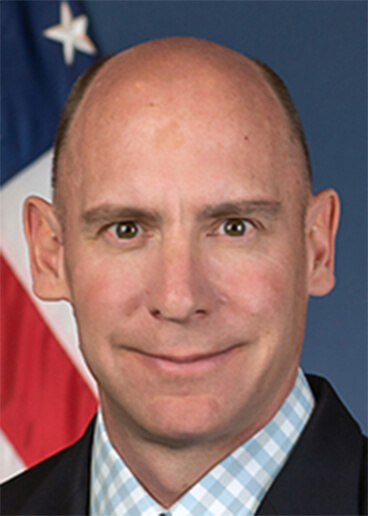 By Brian Cronin
By Brian Cronin
Director, Office of Safety and Operations Research and Development
Federal Highway Administration, U.S. Department of Transportation
In 2021, the National Highway Traffic Safety Administration (NHTSA) determined that there were 966 bicyclist fatalities and 41,615 injuries. NHTSA’s early estimates for 2022 show an 11% increase in pedalcyclist fatalities from 2021.
The Federal Highway Administration (FHWA) is researching solutions that will move our nation to zero fatalities and reduce collisions that result in injuries. We know that in order to solve this crisis we will need to improve roadway design, implement innovative technologies, and consider traveler behavior. Recently, FHWA conducted a study to help roadway designers by creating crash modification factors (CMFs) for separated bicycle lanes (SBLs). A CMF is an estimate used to quantify the change in crashes expected after the implementation of a countermeasure and whether it leads to a decrease in crashes, an increase in crashes, or no change in crashes. A SBL is separated from the adjacent motor vehicle lanes by including both a buffer and a vertical element between the motor vehicle lanes and the bicycle lane. The outcome of the study suggests that SBL treatment can reduce crashes by up 50%. In other words, the CMFs for SBLs show a clear trend that, with their implementation, a transportation agency can expect to see a reduction in bicycle crashes. Check out our report.
As we consider technology, the role of connectivity and the ability to use cellular, Bluetooth, and cellular vehicle to everything (CV2X) to share data between motorists and bicyclists has proven to be valuable. FHWA conducted a project through our Small Business Innovative Research Program, called MAIN-ST, which analyzed received Basic Safety Messages, Signal Phase and Timing Messages and MAP messaging in real time and predicted the likelihood and, where relevant, time-to-event for a predefined class of bicycle-specific and nonspecific hazards (e.g., a collision). MAIN-ST developed and used a smartphone application to intuitively communicate hazard information directly to cyclists, enabling them to benefit from the connectivity of these advanced V2X networks.
In order to conduct the study, the FHWA team used our virtual reality bike simulator at the Turner-Fairbank Highway Research Center (TFHRC) under a cooperative research and development agreement established between TFHRC and Charles River Analytics. During the experiment, we collected data on how participants reacted to different kinds of hazard alerts while riding a bicycle. Participants navigated through a simulated urban environment where they encountered hazards such as potholes and vehicles running red lights. Alerts warned bicyclists about hazards in the roadway using either audible, visual, or haptic alerts. Performance metrics such as evasive maneuvers and reaction times were measured to assess the potential value of each alert type. Results showed improved response time and avoidance by participants assisted by the MAIN-ST system compared to those in the control condition.
Bicyclist alert technology is still in development. By using virtual reality, we were able to collect data on participants’ reactions to the alerts in a safe environment. This initial study showed promising results by identifying that either haptic or auditory cues could be used to help the bicyclists to identify imminent road hazards, and thereby reduce injuries and fatalities.
FHWA, in collaboration with the Office of the Secretary’s Research Office and the ITS Joint Program Office is currently running the Intersection Safety Prize Challenge. This unique prize challenge approach enables USDOT to incentivize the industry to put forward innovative, technology-based concepts to improve vulnerable road user safety. We expect that bicycle safety will be a key area of improvement through advancement of the challenge. You can find updates periodically at Challenge.Gov and at USDOT ITS – Intersection Safety Challenge.
As we embrace technology approaches, it is essential that standardized messages are created to enable the innovation ecosystem to develop. FHWA has worked with standards development organizations to develop underlying messages to support a connected vehicle, pedestrian, bicyclist, and infrastructure ecosystem. We are currently working with the Society of Automotive Engineers on the SAE J2945 Vulnerable Road Use Safety Message standards. The document provides recommendations of safety message minimum performance requirements between a vulnerable road user (VRU) and a vehicle. It addresses the transmission of Personal Safety Messages (PSM) from road user devices carried by pedestrians, bicycle riders and public safety personnel, to provide driver and vehicle system awareness and potentially offer safety alerts to VRUs.
The U.S. Department of Transportation and its Federal Highway Administration are committed to taking urgent action to save lives on our roadways. But action without resources would limit our prospects for success. Luckily, the Bipartisan Infrastructure Law, also known as the Infrastructure Investment and Jobs Act (Public Law 117-58) expanded funding opportunities, promoted Complete Streets policies, and increased eligibility related to bicycling. This provides more resources that allow state and local governments to address bicycle-related fatalities and serious injuries in their jurisdictions. To that end the FHWA has eligibility guidance on the Highway Safety Improvement Program, which received an additional $4 billion in funding under the legislation. The Bipartisan Infrastructure Law also created a new $5 billion Safe Streets and Roads for All competitive grant program for metropolitan planning organizations, local governments, and tribal governments.
FHWA’s research activities, combined with the historic funding provided under the Bipartisan Infrastructure Law, makes me optimistic about the collective effort underway to make travel on our roads, bridges, highways, sidewalks and bike paths safer for bicyclists, pedestrians and all other road users.
Signup For The Bike Lane Newsletter
